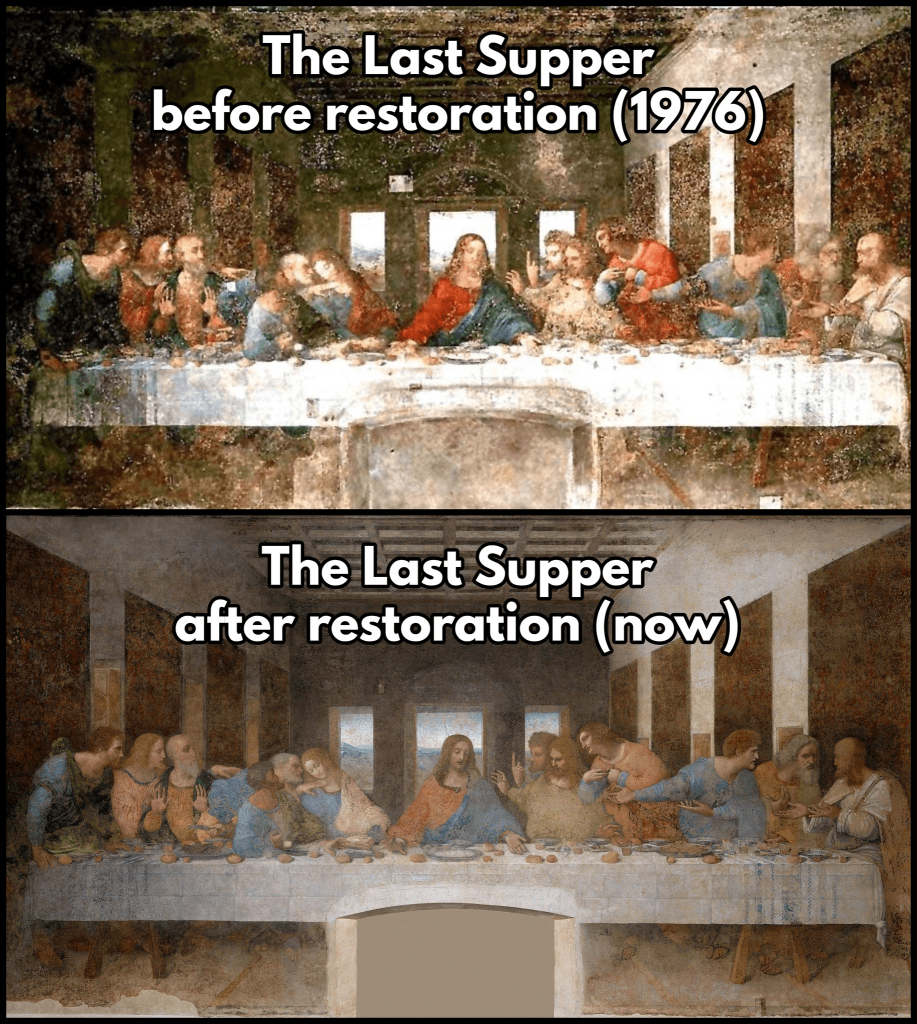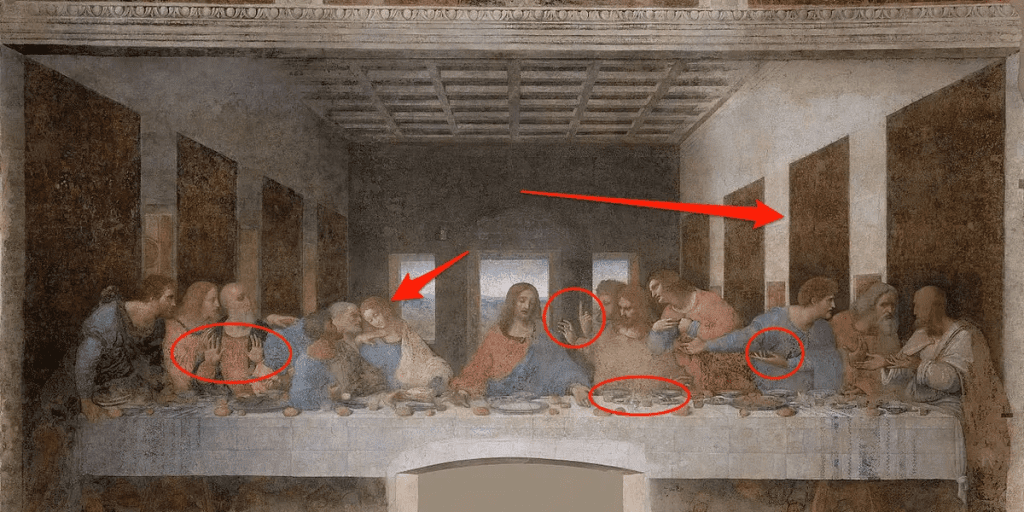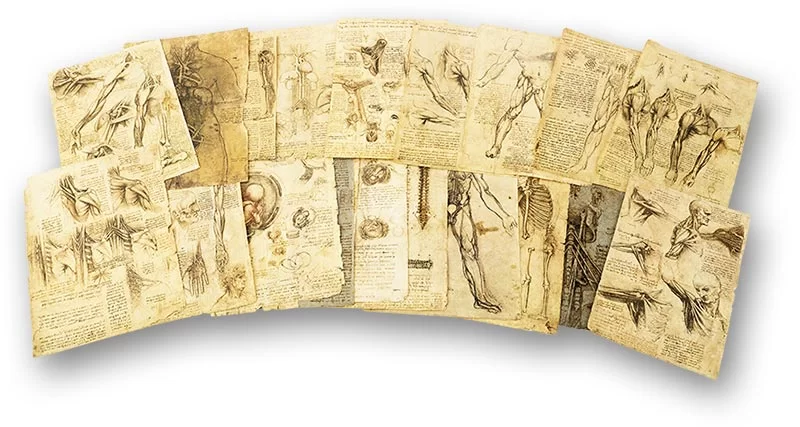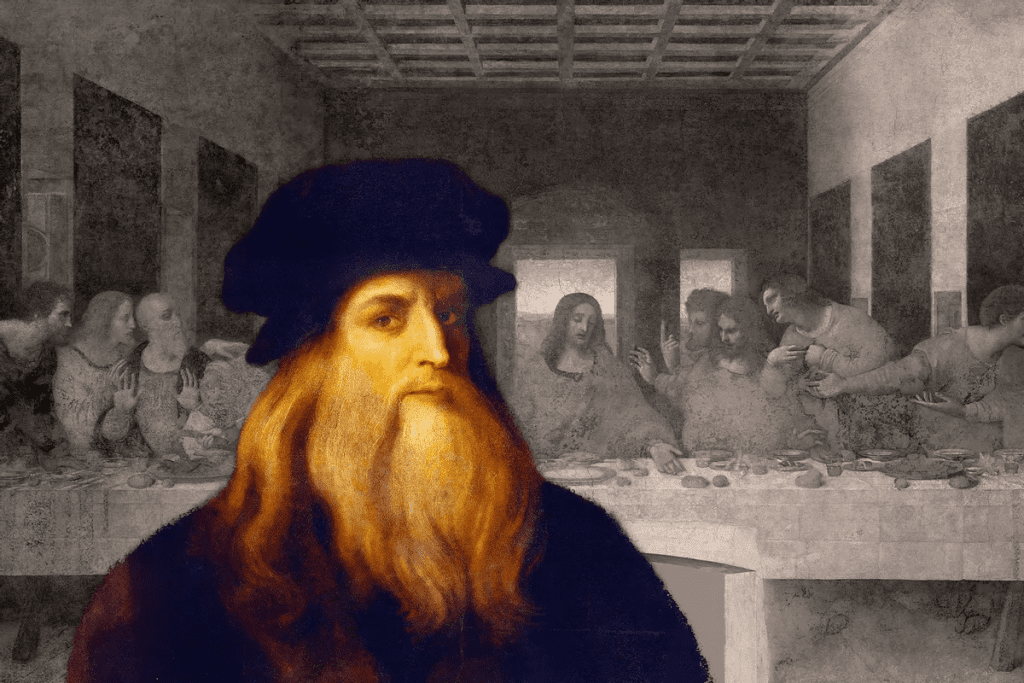In the realm of art, few names evoke as much awe as Leonardo da Vinci. A painter, engineer, scientist, and visionary centuries ahead of his time, Da Vinci’s brilliance touched every field he explored. Yet, despite his towering intellect and creative genius, he left behind a trail of unfinished workincluding one of the most iconic artworks in history: The Last Supper.

A Masterpiece Nearly Lost to Perfectionism
It’s hard to imagine that The Last Supper, now studied in textbooks and visited by millions in Milan, Italy, almost went unfinished. Commissioned in the late 1490s for the Convent of Santa Maria delle Grazie, the mural was meant to be completed within a couple of years. But Leonardo, true to form, stretched the timeline endlessly.

Why? He was obsessed with getting every detail right. From the expressions on the apostles’ faces to the exact moment of Jesus announcing his betrayal, Da Vinci sought to capture a level of emotion and realism that no one had ever attempted in a religious painting. The delay wasn’t due to laziness—it was driven by a relentless pursuit of perfection.
Video:
Secrets Revealed: The Mysterious Messages Hidden in Leonardo da Vinci’s ”The Last Supper”
6,500 Pages, Few Completions
Da Vinci’s notebooks totaling more than 6,500 pages are filled with extraordinary designs and ideas: flying machines, hydraulic systems, anatomical studies, and architectural sketches. He dreamed not only in art but also in engineering, physics, and biology. And yet, few of those concepts were ever completed.
He would begin one ambitious project, then shift focus to another. His curiosity was boundless but scattered, which often left patrons frustrated and projects abandoned midstream. Still, what he did finish continues to influence art and science to this day.

Why The Last Supper Mattered So Much
Despite all odds, The Last Supper was completed around 1498. The result was breathtaking. Instead of relying on traditional fresco techniques, Da Vinci experimented with tempera and oil on dry plaster—an innovation that ultimately caused the painting to deteriorate quickly but allowed him the flexibility to work slowly and revise as needed.
Video:
Leonardo da Vinci’s “Last Supper”; a non-fiction Interpretation
What set this mural apart wasn’t just the subject, but the way Da Vinci presented it. The apostles weren’t stiff or posed. They were captured mid-emotion shock, disbelief, sadness, and confusion each responding differently to Christ’s revelation of betrayal. It was a moment frozen in human drama, not religious iconography.
An “Unfinished” Legacy That Changed the World
Leonardo’s legacy is paradoxical. So much of what he touched remains unfinished or lost to time, yet his impact is undeniable. His ideas laid groundwork for future innovation. His art reshaped our understanding of realism and human expression. His curiosity proved that mastery doesn’t always require completion it often lies in the pursuit itself.
The Last Supper stands as a testament not only to his skill but to his struggle: to make art that spoke to the soul, even if it took years longer than expected.

Conclusion: The Genius in Imperfection
Leonardo da Vinci was a man who saw the world not as it was, but as it could be. His unfinished works, like his unfinished inventions, invite us to dream, to question, and to create. The Last Supper almost didn’t happen but because it did, the world was forever changed.


